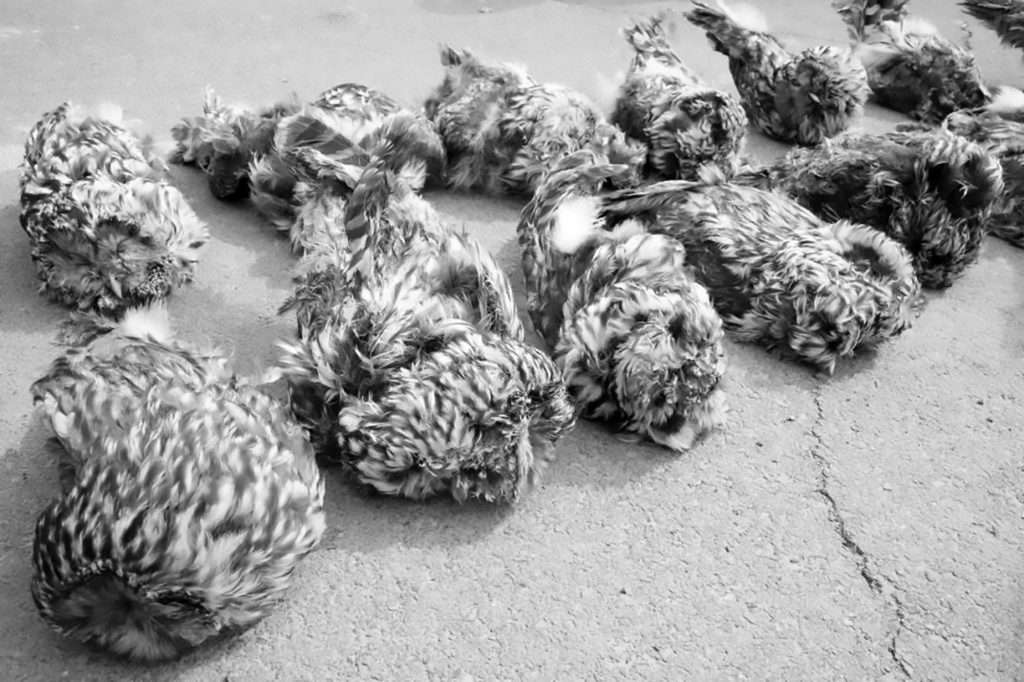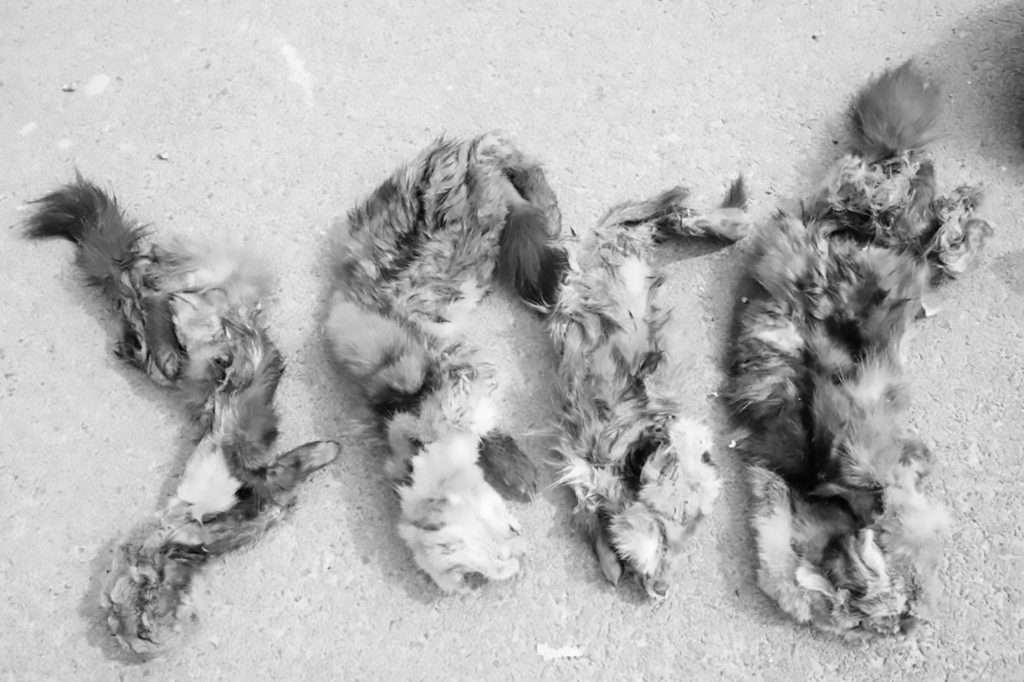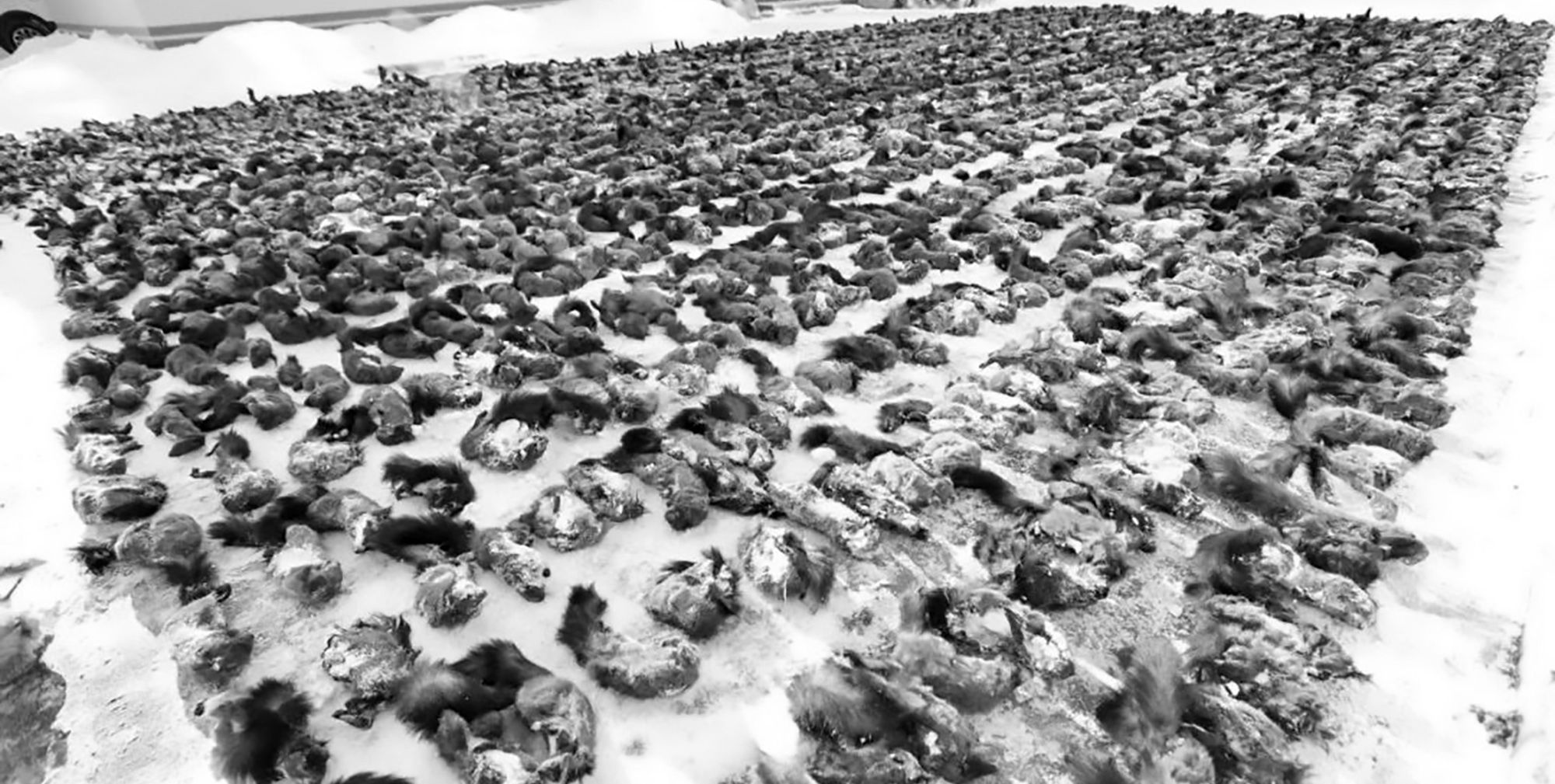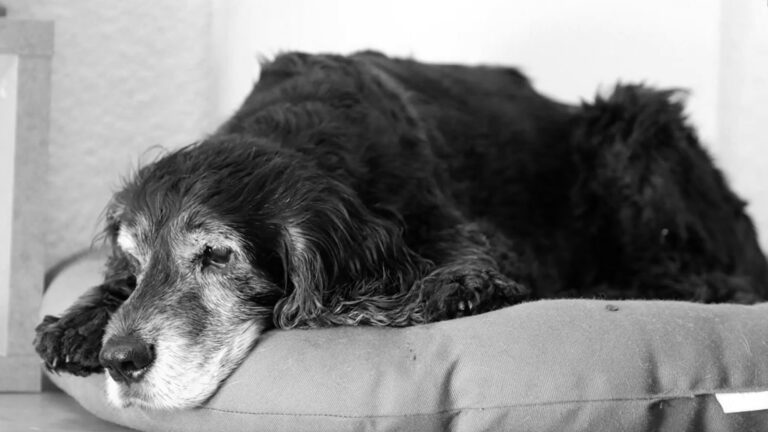These are the more than 13,000 animal carcasses seized by police in China amid fears they could spread the coronavirus.
Authorities with the Baishishan Forestry Bureau in the city of Jilin, which is the former capital of Jilin Province in north-eastern China, announced the large bust, which they said was the result of a four-month operation.
Images show protected species including owls and sable laid out on the ground next to high-powered airguns and catapults.

No fewer than 13,410 illegally poached and trafficked wild animal carcasses were uncovered during the series of investigations, which were slowed but not stopped by the ongoing pandemic, China’s National Forestry and Grassland Administration reported on Tuesday (14th April).
Confiscated animals included four sable (Martes zibellina) – under Class I protection – and 70 hazel grouse (Tetrastes bonasia), eagle owl (Bubo bubo) as well as other owl species.
Forestry police also seized 13,336 specimens of wildlife of “ecological, scientific and social value”.

Weapons used by poachers, 27 of whom are in custody, included seven air rifles and 505 items of hunting equipment – traps, snares, catapults and lead bullets.
The administration said investigations began in November 2019 when they noticed a suspicious vehicle, whose driver, surnamed Liu, was later found to have the carcass of a wild boar (Sus scrofa) in his possession.
Officers discovered numerous frozen animal carcasses in his freezer unit at home. He later confessed to trafficking wildlife as well as selling high-pressure air rifles to other poachers.

Besides the 27 suspects in custody, forestry police are continuing to investigate leads connected to the illegal animal trafficking activity.
In February, at the height of the COVID-19 outbreak in China, Beijing announced a ban on the trade and consumption of wild animals in China.
It came as the origins of the novel coronavirus were traced to vectors such as bat and pangolin, with one Wuhan ‘wet’ market, where wild animals were sold as food, thought to be where the infectious disease began to spread.

The wildlife industry, worth an estimated 60 billion GBP according to a 2017 study by the Chinese Academy of Engineering, is fuelled by the consumption of exotic animal products as food and for Traditional Chinese Medicine.
By the end of 2020, Chinese lawmakers are expected to sign into a law an outright ban on the farming and consumption of wild animals not already under Class I and II state protection, but the regulation is only expected to cover species with ecological, scientific and social value.
To find out more about the author, editor or agency that supplied this story – please click below.
Story By: John Feng, Sub-Editor: Joseph Golder, Agency: Asia Wire Report
The Ananova page is created by and dedicated to professional, independent freelance journalists. It is a place for us to showcase our work. When our news is sold to our media partners, we will include the link here.




